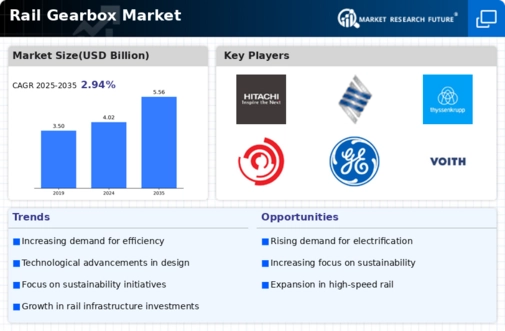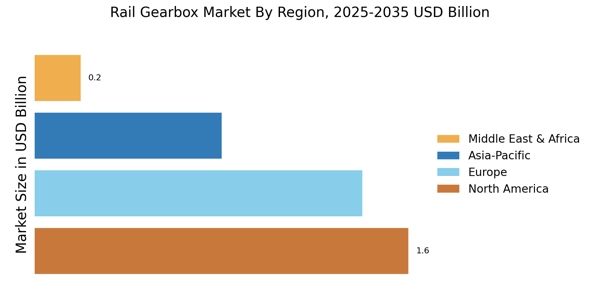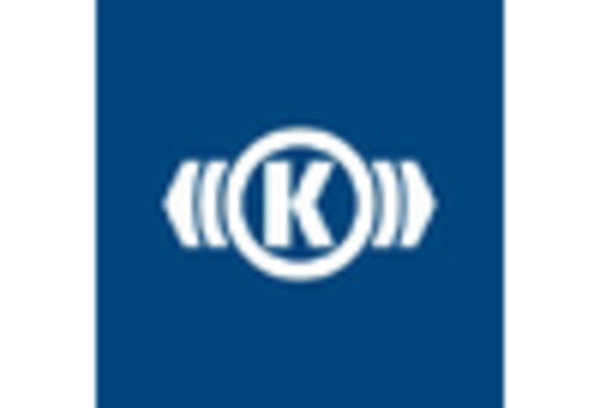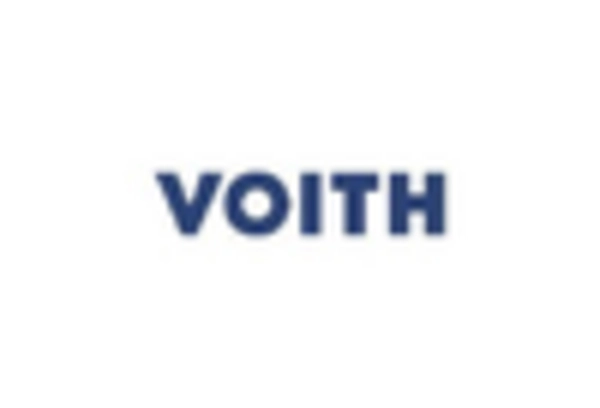Technological Innovations in Gearbox Design
Technological innovations in gearbox design are reshaping the Rail Gearbox Market. The advent of advanced materials and manufacturing techniques has led to the development of lighter, more durable, and efficient gearboxes. Innovations such as computer-aided design and simulation tools enable manufacturers to optimize gearbox performance and reliability. Furthermore, the integration of smart technologies, such as condition monitoring systems, allows for predictive maintenance, reducing downtime and operational costs. As the rail industry increasingly adopts these technologies, the demand for innovative gearbox solutions is likely to rise. Market analysis indicates that the adoption of advanced gearbox designs could enhance overall train efficiency by up to 15%, making it a critical focus area for manufacturers in the Rail Gearbox Market.
Government Investments in Rail Infrastructure
Government investments in rail infrastructure are significantly influencing the Rail Gearbox Market. Many countries are prioritizing the modernization and expansion of their rail networks to enhance connectivity and promote economic growth. For instance, substantial funding is being allocated to upgrade existing rail systems and develop new lines, which directly impacts the demand for rail gearboxes. Recent reports indicate that investments in rail infrastructure are expected to reach several billion dollars in the coming years, creating a favorable environment for gearbox manufacturers. This influx of capital is likely to stimulate innovation and competition within the Rail Gearbox Market, as companies strive to meet the evolving needs of rail operators and ensure compliance with stringent performance standards.
Shift Towards Electrification of Rail Systems
The shift towards electrification of rail systems is a pivotal driver for the Rail Gearbox Market. As countries aim to reduce carbon emissions and enhance energy efficiency, there is a growing trend to electrify rail networks. Electric trains require specialized gearboxes that can handle higher torque and provide better performance compared to traditional diesel engines. This transition is expected to create substantial opportunities for gearbox manufacturers, as the demand for electric trains continues to rise. Data suggests that the market for electric trains is anticipated to grow at a rate of around 6% annually, further propelling the need for advanced rail gearboxes. Consequently, manufacturers are investing in research and development to create gearboxes that are optimized for electric traction systems, thereby aligning with the sustainability goals of the rail industry.
Growing Focus on Safety and Reliability Standards
The growing focus on safety and reliability standards is a significant driver for the Rail Gearbox Market. As rail operators face increasing scrutiny regarding safety protocols, the demand for gearboxes that meet stringent safety regulations is on the rise. Enhanced safety features, such as fail-safe mechanisms and improved load-bearing capacities, are becoming essential in gearbox design. Regulatory bodies are continuously updating safety standards, which compels manufacturers to innovate and ensure compliance. Recent statistics indicate that the implementation of advanced safety features in rail systems can reduce accident rates by up to 30%. This emphasis on safety not only drives the demand for high-quality gearboxes but also fosters a competitive landscape within the Rail Gearbox Market, as companies strive to differentiate themselves through superior safety performance.
Increasing Demand for Efficient Transportation Solutions
The Rail Gearbox Market is experiencing a surge in demand for efficient transportation solutions. As urbanization accelerates, the need for reliable and efficient rail systems becomes paramount. Rail gearboxes play a crucial role in enhancing the performance and efficiency of trains, which is vital for meeting the growing passenger and freight transport needs. According to recent data, the rail transport sector is projected to grow at a compound annual growth rate of approximately 4.5% over the next five years. This growth is likely to drive the demand for advanced rail gearboxes, as operators seek to optimize their fleets and reduce operational costs. Consequently, manufacturers are focusing on developing innovative gearbox technologies that can improve energy efficiency and reduce maintenance requirements, thereby supporting the overall growth of the Rail Gearbox Market.


















Leave a Comment